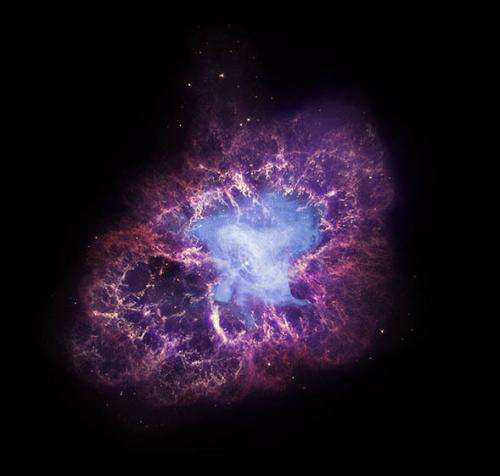The magnetic wakes of pulsar planets

Pulsars are among the most extreme stars in the universe: dense balls of matter which are heavier than the Sun, yet only a few tens of kilometers in diameter. They rotate rapidly (up to several hundred revolutions per second) and flash like lighthouse beacons—hence the name, which is short for pulsating star. And yet despite these exotic properties, pulsars are like our Sun in one way at least: two have been observed to be home to planetary systems.
In work presented to the European Planetary Science Congress in Madrid on Friday 28 September, Fabrice Mottez (Paris Observatory) makes a series of predictions about the properties of planetary systems around pulsars. His team's work has implications both for how to discover these planets, and for their formation, evolution and properties.
"Pulsars and their planetary systems work a bit like giant electric generators," says Mottez. "If the conditions are right, the magnetic field and stellar wind of the pulsar can interact with planets and create a powerful electromagnetic wake around the planets."
This phenomenon may be visible from Earth, which would provide a new method of detecting planets around pulsars. But it has even greater importance for how pulsar planet systems evolve.
When objects such as stars or planets radiate, they lose energy. And while the forces unleashed by the wakes around pulsar planets are not large enough to have a major effect on the planets' orbits, they are expected to have much more profound effects on smaller bodies like asteroids and comets.
"Depending on the direction of their orbits, asteroids and comets could be thrown out into distant orbits or dragged down onto the pulsar's surface. Even for objects as big as a kilometer in diameter, this could happen in less than 10,000 years, which is very rapid on astronomical timescales," says Mottez.
While these phenomena have only a small impact on the orbital motions of planets, Mottez's work is an important step towards better understanding how circumpulsar planets may form.
Pulsars are the dense cores leftover from large stars after they explode in a supernova. Although supernovae are extremely violent, it is thought that planets surrounding an exploding star can survive the blast, albeit in a heavily disrupted orbit. However, planetary survivors like these are not the only kind of planet that could in theory exist around a pulsar.
Planets form from discs of matter that gradually accrete around stars, usually when the star has just been born. However, it is thought that the debris thrown out by supernovae could provide material that triggers a second burst of planet formation around pulsars, shortly after the explosion.
The disruptive effects of the electromagnetic wake on small objects could have profound consequences for the formation of such second generation planets.
Provided by Astrobio.net



















